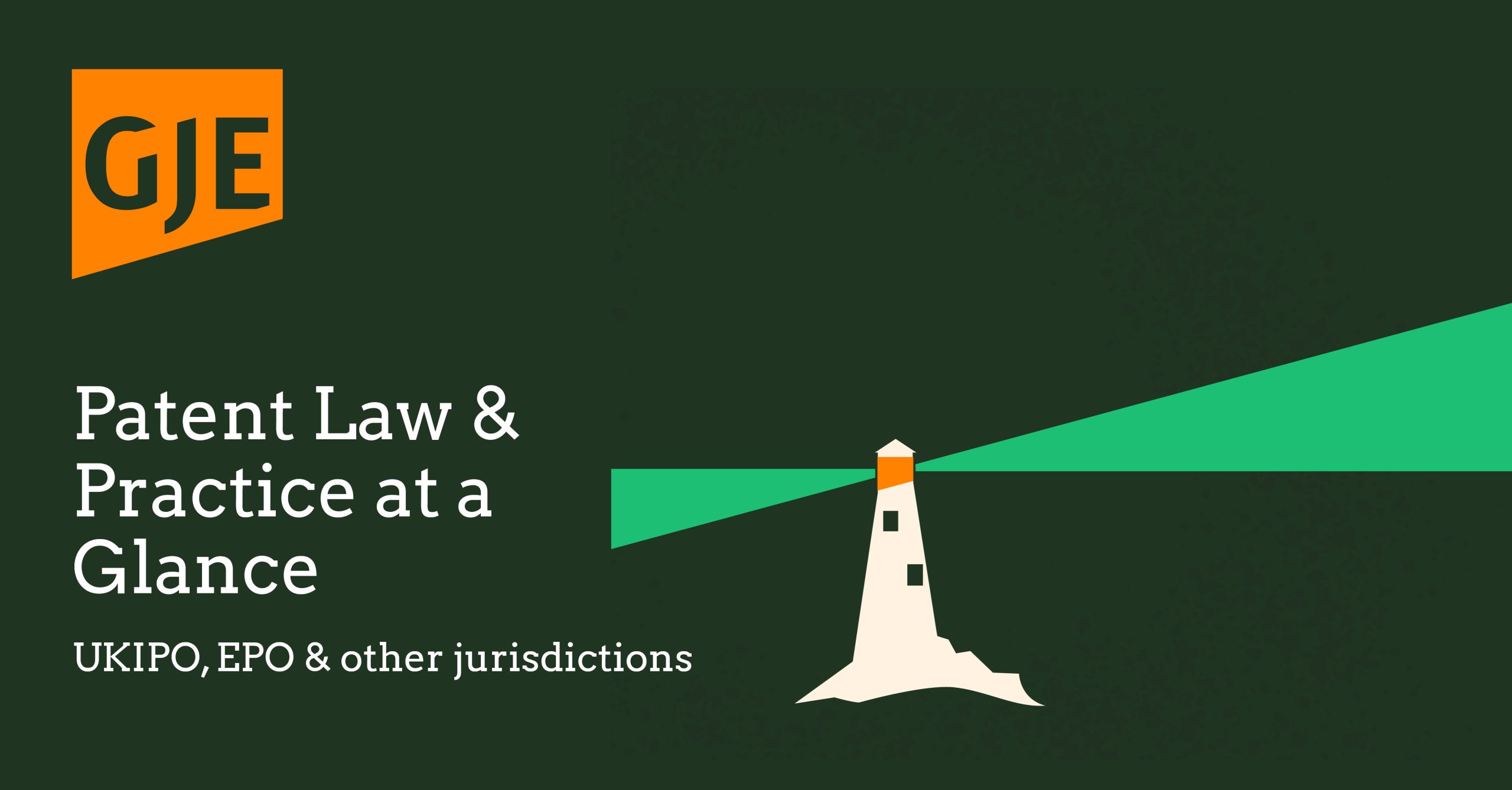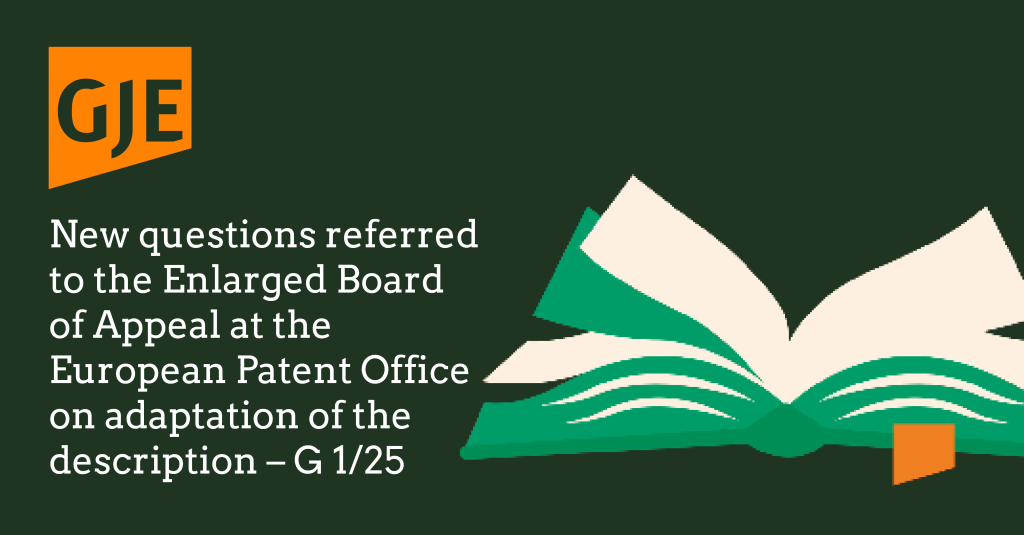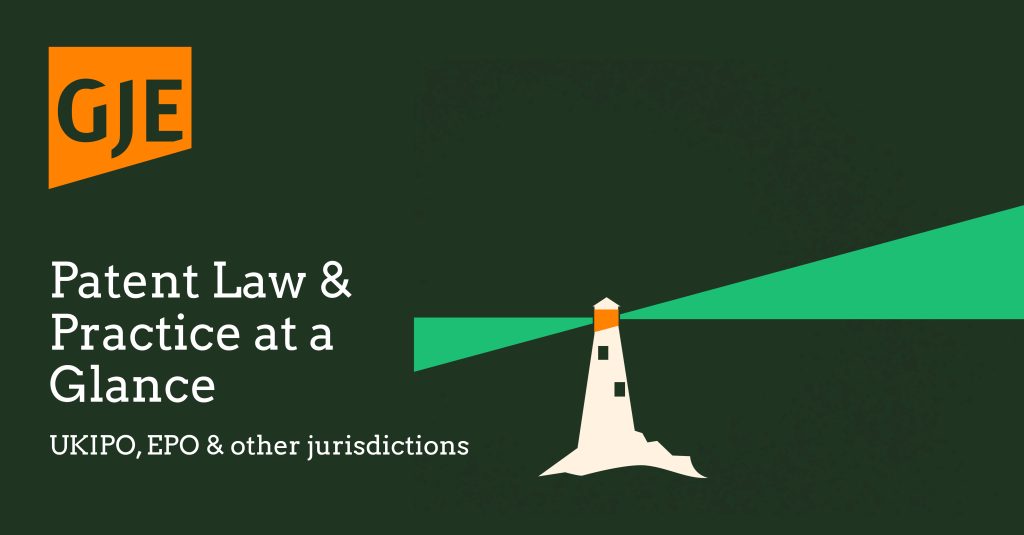
UKIPO update
One IPO update
The UKIPO has been publishing a series of blogs providing information about its new filing system, “One IPO”, which is due to launch next year. The full series can be found here, and some notable entries are highlighted below.
The Applying for Patents blog sets out technical details as to the kind of document formats that the system will require for different documents.
One practical change revealed in the Patent Examination blog is that practitioners will now be required to submit a complete specification when amending the patent application, rather than replacement pages corresponding only to those parts of the application that have been changed.
UK-China IP
The UKIPO publishes a newsletter targeted at UK stakeholders and including updates on recent development in Chinese IP. The latest edition of this newsletter can be found here.
Monthly filing statistics: Patents, trade marks and designs
The latest month’s statistics are now available here. Statistics for previous months can be found here.
Customer service standards
The latest update on how the UKIPO are doing relative to the targets they have set themselves can be found here.
EPO update
Referral to Enlarged Board of Appeal in G 1/25
The Technical Board of Appeal in case T 0697/22 has referred the following points of law to the Enlarged Board of Appeal:
- If the claims of a European patent are amended during opposition proceedings or opposition-appeal proceedings, and the amendment introduces an inconsistency between the amended claims and the description of the patent, is it necessary, to comply with the requirements of the EPC, to adapt the description to the amended claims so as to remove the inconsistency?
- If the first question is answered in the affirmative, which requirement(s) of the EPC necessitate(s) such an adaptation?
- Would the answer to questions 1 and 2 be different if the claims of a European patent application are amended during examination proceedings or examination-appeal proceedings, and the amendment introduces an inconsistency between the amended claims and the description of the patent application?
Click here to read our update.
PCT update
Modifications to the Administrative Instructions under the PCT
The Administrative Instructions under the PCT have been modified, with effect from 1 January 2026, to implement amendments to Rules 34, 36 and 63 of the Regulations under the PCT. The amendments include a revised definition of the minimum documentation that an International Searching Authority is required to consult during international search. Please see here (pages 1 to 2) for further details.
Eligibility for reductions in certain PCT fees
At the European Patent Office, the fees for international search, supplementary international search and international preliminary examination are reduced by 75% of the international application, the request for supplementary international search or the demand for international preliminary examination is filed:
- by a natural person who is a national of and resident in a state which is not a Contracting State of the European Patent Convention, and which on the date of filing of the application, or of payment of the supplementary international search or the international preliminary examination fee, is classified by the World Bank as a low-income or lower-middle-income economy; or
- by a natural or legal person who is a national of and resident in a State in which a validation agreement with the EPO is in force.
Namibia has been added to the list of States which fall under 1., and Cabo Verde and Samoa have been removed from the list. Please see here (page 2) for further details.
Correction of publication errors concerning international applications published on 11 September 2025
For all international applications published on 11 September 2025, the front page (PDF image) of the published applications indicated an incorrect date of publication (12 September 2025) caused by a technical error. The correct publication date, as already correctly shown in the PATENTSCOPE Bibliographic Data tab of those applications, is 11 September 2025. The International Bureau has scheduled to correct the errors and republish the front page of all affected initial publication of the international applications on 2 October 2025.
SME support series: How to manage application filing costs as an SME
The following question was answered: I am a start-up with a technical idea that I am confident is new and inventive based on my technical expertise about the current state-of-the-art. I have heard about patenting and the PCT, but before contacting a patent attorney I am interested in an estimate of costs and how to possibly save money at a later stage. Which fee reductions are possible for my patent application if I use the PCT?
The answer set out here (pages 8 to 10). In summary, the PCT route offers the most flexible and cost-effective approach to seeking international patent protection for SMEs in many situations. With substantial fee reductions available and strategic timing options, startups can manage costs while maintaining broad protection options. Success requires careful planning and leveraging available support programs and fee reductions.
Working with experienced patent attorneys, while initially adding costs, significantly improves the chances of your application being granted and can prevent costly resubmissions and multiple corrections, making it a worthwhile investment for most inventors seeking international protection.
Practical advice: Strong authentication for login to the ePCT system
The following question is answered: When I log in to the ePCT system, it always prompts me to use “strong authentication”. What options do I have for this and what are the best practices for keeping my WIPO Account secure?
The ePCT system has been developed to provide highly secure access to information and services relating to PCT applications. Almost all of the functions require users to log in using not only a username and password, but also a second means of authentication commonly referred to as two-factor authentication (2FA) which WIPO Accounts refers to as “strong authentication”.
It remains, of course, important to create a strong password that is not reused anywhere else, but strong authentication means that if your password is discovered, there is an extra layer of protection to prevent access or damage to the data that can be accessed through your WIPO Account.
WIPO currently supports four types of strong authentication. You can set up one or more of these and then select which one you want to use when you log in.
For more information, please consult the ePCT User Guide FAQs where further advice is available from the “Strong Authentication” tab.
Other useful links
The PCT seminar, webinar and event calendar can be found here (pages 13 and 14).
The PCT fee tables (as of 1 September 2025) can be found here (pages 15 to 22).
A list of PCT Contracting States and Two-Letter Country Codes (as of 1 September 2025) can be found here (page 23).


